Bill Hayward loves to explore rivers. His method for For the design of this boat, it is hard to believe that doing so involves the use of efficient and environmentally responsible propulsion, and his favored designer is Paul Gartside of Sidney, British Columbia. His first collaboration with Gartside was a 20' pedal-powered boat, which he took on an 18-month journey from Alberta to the Gulf of Mexico, up the East Coast, into the Hudson River, then on to the St. Lawrence River and finally to Halifax, Nova Scotia. For his most recent voyaging boat— WAYWARD—he resorted to the use of an engine-powered 24' 3" hull that is also the result of a collaboration between owner and designer. Hayward wanted a boat for a journey through some of the rivers of the United States and eventually for a cruise on the canals of Europe. As of this writing, Bill had taken the new boat on the upper Mississippi from St. Paul, Minnesota, to St. Louis, Missouri. From there he traveled up the Illinois River to Chicago and into Lake Michigan. An overland trip by trailer took the boat to Halifax. The canals of Europe still beckon. An easily driven hull needn’t be unattractive, as designer Paul Gartside has proved with WAYWARD, which relies on a 25-hp outboard for propulsion.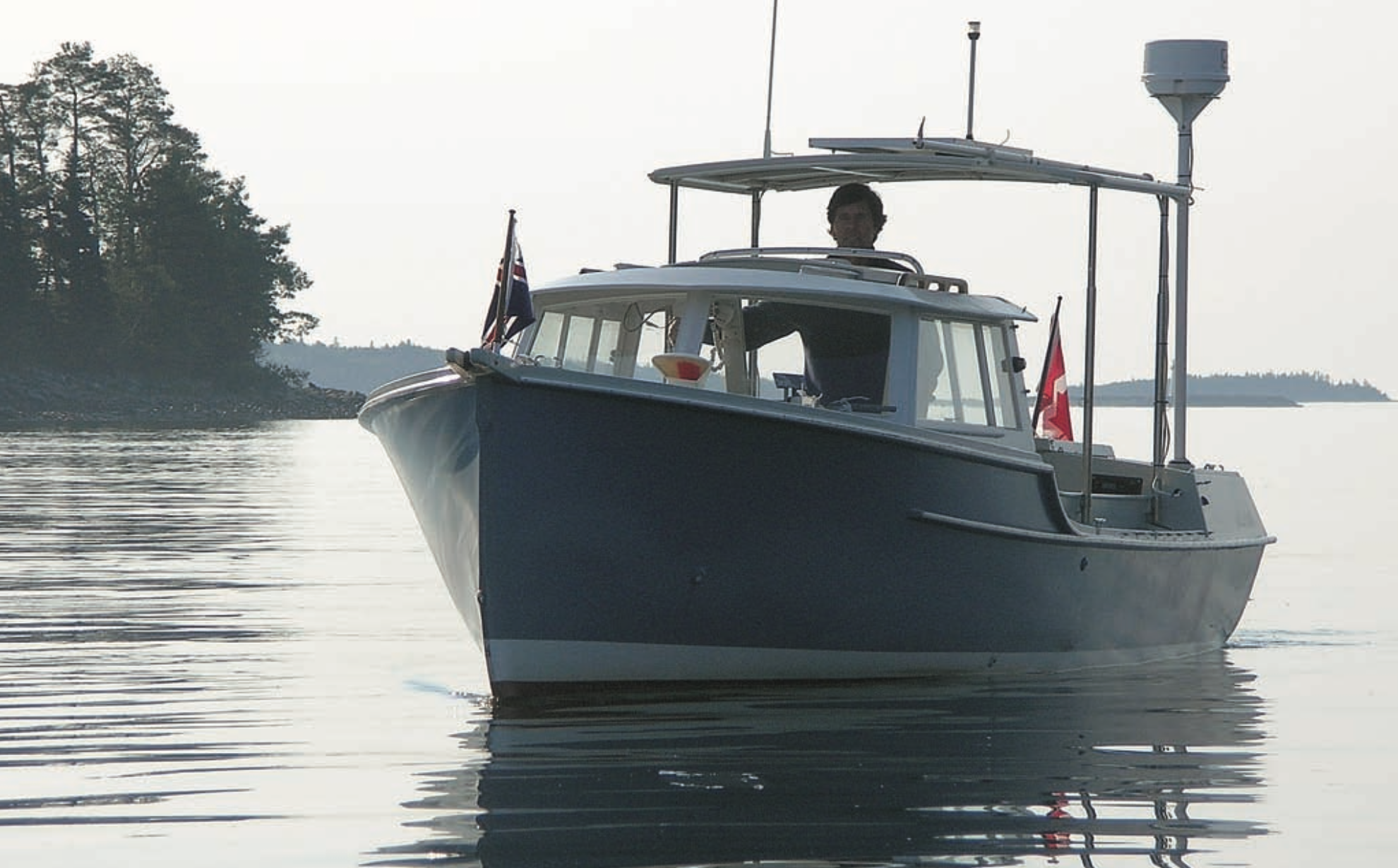 Photo by Wyatt Lawrence
Photo by Wyatt Lawrence
Join The Conversation
We welcome your comments about this article. To include a photo with your remarks, click Choose File below the Comment box.


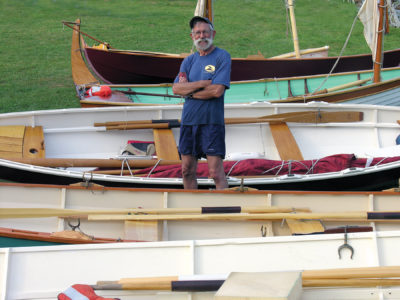
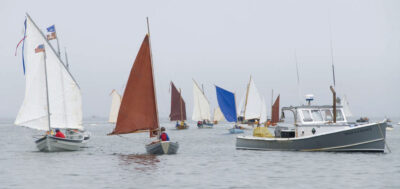
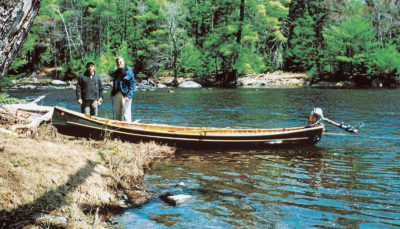
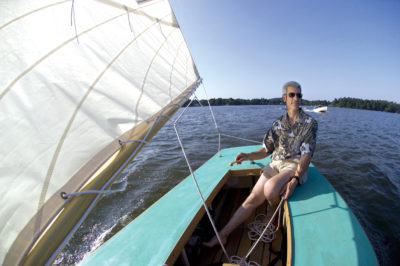
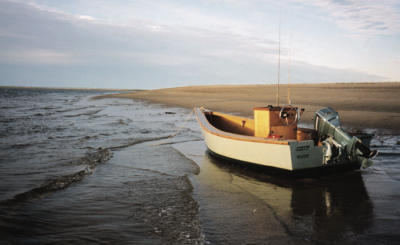
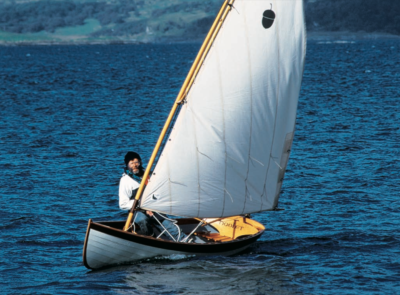
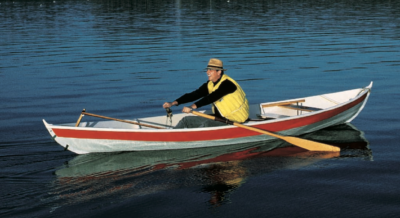
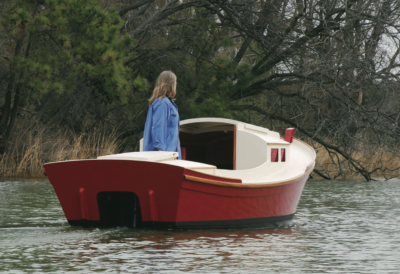
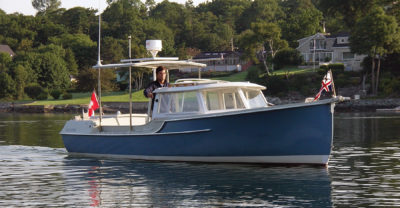
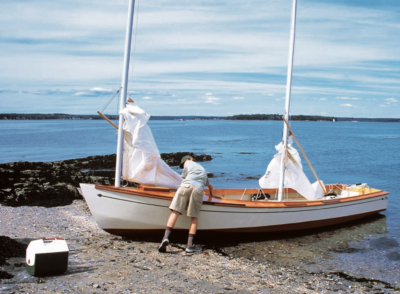


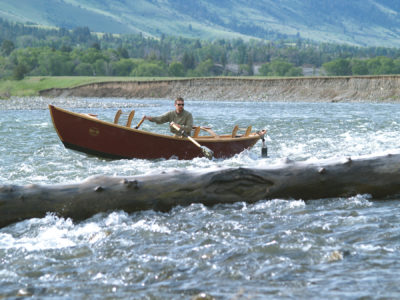
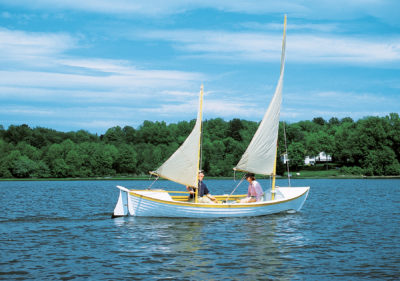

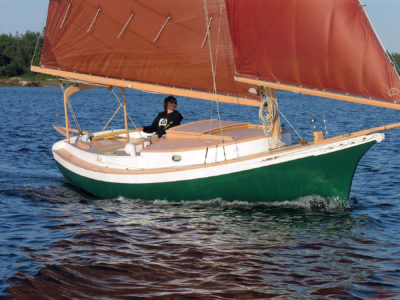
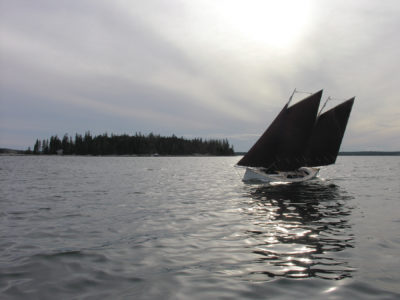
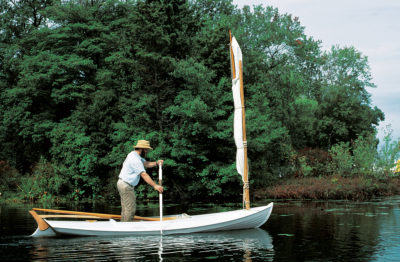
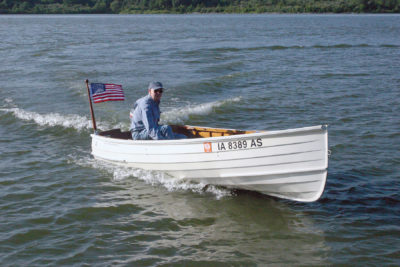
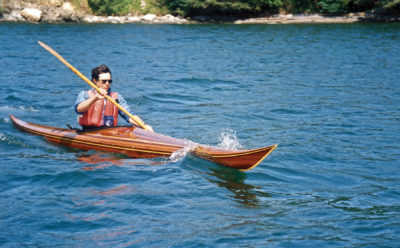
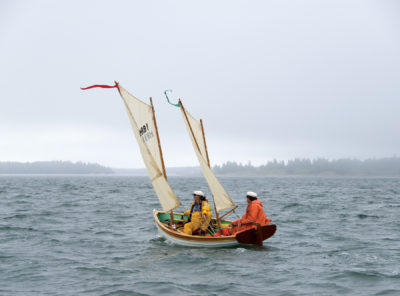
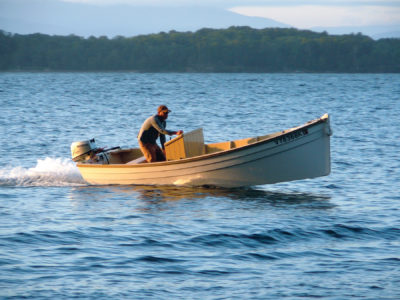
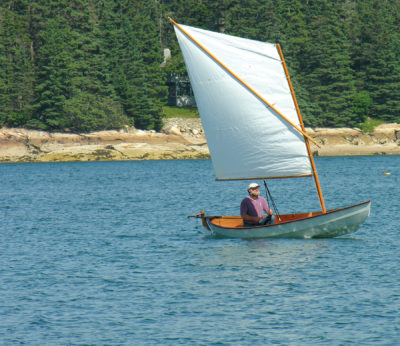

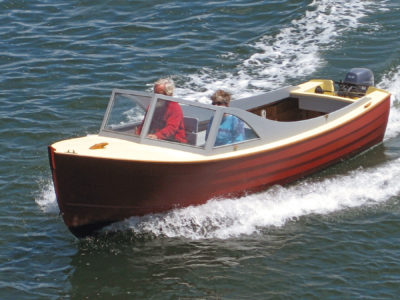
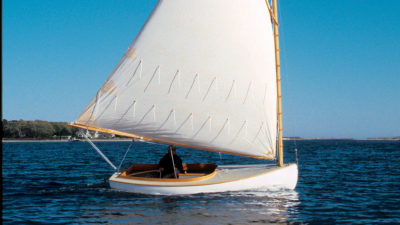
Are the plans available for this boat?
Yes, they are 390USD, and Gartside operates these days out of NY. This boat pops up a lot in reprints and such, though I don’t know that anyone else has bought one.
Are there pictures of a build and cost estimates and a bill of needed materials?
I have been on the hunt for this boat for years, so far the only pictures I have seen are from this article. Considering what it would take to bring this up to current standards, I would imagine a new design is required.
Cost is so variable, even without the threat of stagflation, that I can’t imagine how one would pin it down. If dry weight is half the displacement, then it might run 1500 pounds. At 4-8 dollars a pound you are looking at 6-12K for the structure. Start laying in epoxy and glass now, while prices are not unrecognizable.
“Construction is strip-planked western red cedar sheathed inside and out with 17 oz biaxial glass cloth and epoxy resin.”
I would estimate the surface area at 864 square feet, that is 24 x 6 x 8 x .75. So you can work out your planking and glass costs from that. Epoxy in ounces is similar to weight of cloth in ounces, though all these numbers are only the skin and the bare minimum, but if you can afford the “canoe” you should be be able to outfit it over the time it will take to do the work.
There are a lot of different ways to deal with the wood package. I recently got a lot of 1088 marine ply at sub garbage big box ply prices. Like 20 dollars a sheet for 1/4″. It turned out to be on the heavy side, but would be fine for something like this. But even at regular prices, the stuff was selling for a lot less that construction grade. And then there was some new pricing… which I am going to have to swallow some day.
If I was on the west coast, I would find a tree that was bothering someone and break out the chainsaw mill.
The story reports:
Unfortunately, WAYWARD’s engine rises when tilted, and the cover that encloses the tilted engine will be a big presence. The owner felt that the top section of the enclosure did not fit with the sleek lines of the hull and cabin, so he removed it.
I cannot figure this out. I don’t see where ‘he removed the top section’. The motor enclosure in the pix looks to be monolithic. Could you elaborate on this confusion, please?
I very nice craft in any case!! Keep this sort of thing coming.
If you compare the picture with the enclosure with the profile drawing, you can see the top portion of the well has been removed with a flatter top replacing it.
I think an alternative implementation would be to use a Nigel Irens (and many trad boats) installation where the motor is in a well near the pilot. One could get away with a tiller motor. Then retain the steering lever, but to control a transom-mounted rudder. Then you could have a toilet in an enclosure where there motor now is.
This is a great deal more efficient as you can have a sailboat hull shape. The downside being motor noise. I would just wear ear plugs if it got to me. Aren’t many people going to have their music on anyway? And for my canal use, I would probably run my 9.9.
You can find the Nigel Irens boats on Youtube, he was the inventor of the modern low-drag trimaran that wins so many races. But I have long preferred Wayward, from the waterline up.
To the real aficionado maybe the motor noise is the music!
I’m interested in how the stick steering was rigged. Is it a cable & pulley system or an adaption of a Teleflex or hydraulic setup?
Don’t know quite why some seem embarrassed by the look of an outboard. Nice boat for sure! The small quantity of outboards of any type worldwide is like a flea on a dog compared to all the other more common forms of pollution. My Boat I think it is an ’80s or older Sam Cocker design has an exposed 2 stroke outboard, that was cheap ( a few hundred bucks), like new, 4 cylinders and light compared to 4-joke. It gets fab gas mileage when cruising slow, but when you need to get to shore in hurry will hit 40 MPH in a real hurry as 2-strokes have acceleration which 4-jokes do not. It is louder, but better than rock music which my parents said was mostly noise. Now that I am older, I see their point was true. My outboard is 50 hp and I bet weighs less than the 25 hp and is nice looking, cheap, simple and more reliable.
Now that I’m older, I consider AC/DC to be mindless but energizing entertainment, and loud motors to be noise pollution. At work I chose to dust off the 13ft Jon boat w 55lb thrust trolling motor no one else will use, instead of the baddas work pontoon w 175hp recipient of more pics than another boat in the marina, even though the former maxes out slower than a walking speed and crabs sideways in breeze I can’t even feel, because the latter roars with a nervous frenetic intensity even at no-wake speeds. I get you like your old motor, Mike, and perhaps similarly I groan deeply at all the primo parts cars that Obama crushed in a misguided understanding of Reduce/Reuse/Recycle, but instead I wish they made quiet and clean four strokes before everything became computer designed to be as flimsy as possible.
Outboard motors were never meant to be like the old Homelite Bearcat 55 that was introduced in the 1960’s. IT was very heavy, slow, no acceleration like most 4 strokes today. 2 strokes had reached a Zenith before 4 strokes were forced upon us by the EPA. No one wanted the Homelite. You can make a 2 stroke almost as quite as a 4 by insulation glued under the 2 stroke cowling. When everything is said and done considering the new manufacturing wastage and pollution (mostly in Japan), the waste and disposal of used 4 stroke oil, I think the 2 and 4 come close to the same on clean. The Evinrude E-tec actually beat 4 strokes on burning cleaner but was overly complex. and went out of business. More work could be done to refine the 2 stroke and be lighter, faster, quiet and have greater fuel economy and be clean. I would hope to see a revival of American company’s like Johnson/Evinrude, but with the dominance of Asian companies this probably will never happen.